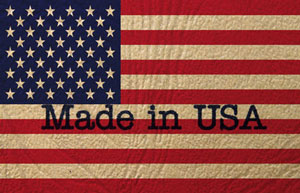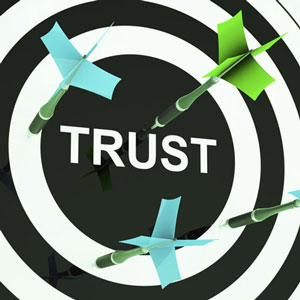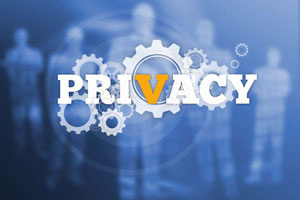••• travel and leisure
Have money, will travel
Affluents traveling and spending more
 The One Percent just got a little bigger – among active travelers, that is. Specifically, 6 percent of leisure travelers now have an annual household income of $250,000 or more, compared to 4 percent in 2010, and in an interesting demographic shift, women now make up the majority of these affluent travelers, up from 42 percent in 2010, according to the 2013 Portrait of American Travelers study from MMGY Global, a Kansas City, Mo., travel marketing agency, and the Harrison Group, a Waterbury, Conn., research company.
The One Percent just got a little bigger – among active travelers, that is. Specifically, 6 percent of leisure travelers now have an annual household income of $250,000 or more, compared to 4 percent in 2010, and in an interesting demographic shift, women now make up the majority of these affluent travelers, up from 42 percent in 2010, according to the 2013 Portrait of American Travelers study from MMGY Global, a Kansas City, Mo., travel marketing agency, and the Harrison Group, a Waterbury, Conn., research company.
Affluent travelers are planning more trips in 2014 than travelers with more modest annual household incomes. Twenty-eight percent plan to take more trips, versus just 18 percent for the general population of all leisure travelers. They also intend to spend more on vacations in the year ahead. This group took an average of five leisure trips in 2013 and spent an average of $9,765 during that time period. They expect to spend $10,585 in 2014, which represents a spending increase of 8.4 percent on vacations.
The research also indicated a shift in the affluent traveler demographic. Affluent travelers are now more likely to be married (82 percent), compared with 77 percent in 2010. Affluent travelers are also older, with an average age of 49 in 2013, compared with 43 in 2010. Just 1 percent of this group was retired in 2010, compared with 14 percent in 2013.
More affluent travelers have no children at home in 2013 (59 percent), compared with 2010 (40 percent), and have taken fewer trips with a spouse/another adult and children (mean of 1.5 trips) than in 2010 (mean of 2.3 trips).
Seven in 10 affluent travelers took a vacation outside the continental U.S. during the past 12 months. The most popular destinations included Western Europe (52 percent), the Caribbean (41 percent), Mexico (22 percent) and Canada (18 percent).
Nine in 10 affluent travelers use the Internet to obtain information about travel services or suppliers, including availabilities and rates. The most popular travel Web sites among affluent travelers include specific airline-branded Web sites (53 percent), Expedia (46 percent), TripAdvisor (46 percent), specific hotel-branded Web sites (45 percent), Orbitz (42 percent), Travelocity (36 percent), Kayak (33 percent) and Priceline (26 percent).
www.mmgyglobal.com/research
••• millennials
American-made matters
Supporting the economy and quality drive Millennials to buy ‘Made in the USA’
 A shopper research survey conducted by Perception Research Services (PRS), Teaneck, N.J., indicates that shoppers are motivated by “Made in the USA” claims on packaging, as most say that they are more likely to purchase a product after noticing the “Made in the USA” claim on it. This claim has resonated with Baby Boomers in the past and is influencing Millenials more than ever.
A shopper research survey conducted by Perception Research Services (PRS), Teaneck, N.J., indicates that shoppers are motivated by “Made in the USA” claims on packaging, as most say that they are more likely to purchase a product after noticing the “Made in the USA” claim on it. This claim has resonated with Baby Boomers in the past and is influencing Millenials more than ever.
According to Boston Consulting Group’s (BCG) Center for Consumer and Customer Insight, U.S. Millennials are receptive to cause marketing and are more likely than non-Millennials to purchase items associated with a particular cause (37 percent vs. 30 percent). Consistent with 2012, the 2013 PRS study showed that the primary reason shoppers claim they are more likely to purchase “Made in the USA” products is to help the economy. Another reason is because American-made products are perceived to be higher quality and worth paying more for. According to BCG, “When considering similar products made in the U.S. vs. China, the average American is willing to pay up to 60 percent more for U.S.-made products.”
However, this may vary greatly based on the specific product category. Recent sales data suggest that many apparel shoppers are willing to forgo some level of product quality in order to pay less. According Port Washington, N.Y., research company The NPD Group, many t-shirts that are bought today are lighter than they used to be since manufacturers had to take things out to keep the price the same.
But Walmart, for one, is pushing to have it both ways – maintain low costs while still providing American-made goods. Walmart asserts it is giving its suppliers added incentives that would increase sourcing of American-made products by $50 billion over the next 10 years and create more than 1,600 American jobs.
A wide range of companies such as Apple, General Electric and Brooks Brothers are also experimenting with making more products in the U.S. However, the shift to more American-made products may not be entirely patriotic. For many, manufacturing abroad no longer makes sense. Either it is becoming too costly or they feel they are lacking a competitive edge. In some cases they want to meet consumers’ desire for American-made goods or they simply want to get merchandise from the design phase into stores within weeks rather than months to be of-the-moment.
Importantly, for the shoppers in the PRS study, the majority of products they say they would prefer to purchase if American-made are food, medicine and personal care items, suggesting that quality and safety may be the true motivating factors. This may be in part because for these lower-priced items, the cost-savings may not be substantial enough to sacrifice quality.
www.prsresearch.com
••• consumer research
In corporate America we distrust
Americans find 18 of 19 industries less honest and trustworthy
 For the past decade, Rochester, N.Y., research company Harris Interactive’s The Harris Poll has measured the percentage of Americans who perceive 19 large industries as generally honest and trustworthy. In 2013, this perception dropped for 18 of the 19 industries, as U.S. adults overall seem to have lost trust in most of corporate America. The only industry that did not drop is tobacco companies, as just 3 percent of Americans say they normally would believe a statement from someone in that industry – same as it’s been for the past few years.
For the past decade, Rochester, N.Y., research company Harris Interactive’s The Harris Poll has measured the percentage of Americans who perceive 19 large industries as generally honest and trustworthy. In 2013, this perception dropped for 18 of the 19 industries, as U.S. adults overall seem to have lost trust in most of corporate America. The only industry that did not drop is tobacco companies, as just 3 percent of Americans say they normally would believe a statement from someone in that industry – same as it’s been for the past few years.
At the other end of the spectrum, the most trusted industries are supermarkets, where 30 percent say this industry is generally honest and trustworthy, and hospitals, with 28 percent. However, trust in supermarkets and hospitals is down 8 percentage points each from 2012.
When asked which industries are generally honest and trustworthy so that you normally believe a statement by a company in that industry, 42 percent replied “none of these” – an increase from 2012, when 36 percent indicated the same. After tobacco companies, the industries that are least-trusted are oil companies (4 percent), social media (6 percent), managed care (6 percent), telecom (7 percent) and health insurance (7 percent). Just one in 10 say they think packaged food companies (11 percent), airlines (11 percent), car manufacturers (11 percent), pharma and drug companies (10 percent) and life insurance companies (10 percent) are generally honest and trustworthy.
The industries trusted by the highest percentages of Americans after supermarkets and hospitals are online search engines (18 percent), banks (18 percent), computer hardware companies (17 percent), online retailers (15 percent), electric and gas utilities (14 percent) and computer software companies (13 percent).
The biggest changes since 2012 on this question are the eight-point drops for supermarkets and hospitals, a seven-point drop for computer software companies and a six-point drop for electric and gas utilities. Over the past decade, the biggest drops are 17 points for banks and 12 points for packaged food companies.
This series also asks which of the 19 industries should be more regulated by government, and three in 10 Americans select “none of these.” The industries that the largest percentages of U.S. adults would like to see more regulated are oil (41 percent), pharmaceuticals (39 percent), tobacco (35 percent), health insurance (34 percent), banks (31 percent), electric and gas utilities (24 percent), packaged food companies (24 percent) and managed care companies such as HMOs (24 percent). Few U.S. adults (less than 10 percent) want to see more regulation of computer hardware and software companies (6 percent each), online search engines (7 percent), online retailers (7 percent) or supermarkets (9 percent).
www.harrisinteractive.com
••• mobile research
Big Brother abroad
Conservative Americans most concerned about mobile data privacy
 With the news that the National Security Agency tracks the locations of nearly five billion cell phones every day overseas, including those belonging to Americans abroad, now more than ever, Americans are worried about the privacy of their text messages and mobile phone calls. And that level of concern varies according to gender, age and whether respondents considered themselves liberal or conservative, according to a survey from CoverMe, a San Jose, Calif., messaging app, and SodaHead, an Encino, Calif., online research community.
With the news that the National Security Agency tracks the locations of nearly five billion cell phones every day overseas, including those belonging to Americans abroad, now more than ever, Americans are worried about the privacy of their text messages and mobile phone calls. And that level of concern varies according to gender, age and whether respondents considered themselves liberal or conservative, according to a survey from CoverMe, a San Jose, Calif., messaging app, and SodaHead, an Encino, Calif., online research community.
Americans are very concerned about the privacy of their mobile communications, as 65 percent of respondents are not confident that their mobile phone comes with adequate security and privacy technology. One-third of respondents believe that the government is reading their text messages.
Only 7 percent of respondents that consider themselves to be liberal feel the government is reading their text messages, while 41 percent of conservatives think the government is taking a look. Sixteen percent of those ages 25-to-35 are worried that government is reading their texts, as are 37 percent of those ages 35-to-44. However, almost two-thirds of respondents said that they would not be willing to try a messaging service with military-grade encryption, which might indicate that their concerns are not severe enough to warrant taking action.
Mobile communications “snooping” is rampant, especially among women, teens and Millenials. Fifty-seven percent of respondents have caught someone reading their text messages or looking at their photos. When broken down by gender, the survey data reveals that for females, the number skyrockets to 78 percent who have caught someone. Eighty-one percent of both 13-to-17-year-olds and 18-to-24-year-olds have also caught people reading their texts and viewing their photos.
www.sodahead.com
••• sports and entertainment
Living the dream
A look at fantasy sports in the digital age
 With the Super Bowl just behind us, the fantasy football season has wrapped up and fantasy baseball is right around the corner. As consumers – especially sports fans – become tech-savvier and more mobile-friendly, staying engaged with the fantasy sports experience is becoming easier and easier. New York researcher The Nielsen Company conducted a study to take a closer look at how fantasy sports are scoring with users.
With the Super Bowl just behind us, the fantasy football season has wrapped up and fantasy baseball is right around the corner. As consumers – especially sports fans – become tech-savvier and more mobile-friendly, staying engaged with the fantasy sports experience is becoming easier and easier. New York researcher The Nielsen Company conducted a study to take a closer look at how fantasy sports are scoring with users.
Fantasy sports have become big business since sprouting from a Rotisserie, or owner simulation, game decades ago. The growth of this niche industry has also picked up momentum as technological advances in interfaces, devices and statistical data aggregation have allowed players a way to easily check scores, adjust rosters and trash-talk from anywhere and on any device – that’s light years from having to hand-tabulate player stats in the years before the digital age.
During the second quarter of 2013, fantasy sports players were most likely to be male and aged 25-to-34 (49 percent and 72 percent more likely than the average U.S. Internet user, respectively). Compared with the average adult online, fantasy sports players were also 21 percent more likely to be Asian-American, 12 percent more likely to have children and 7 percent more likely to make between $50,000 and $75,000. Sixty-eight percent of adult fantasy sports players online are male and are 49 percent more likely to be male than the average U.S. adult online.
So which sports sites and apps do fans draft when they’re looking to build their fantasy teams? Power rankings by Nielsen show that familiar names like ESPN and Yahoo! Sports are top picks among fantasy sports players. During second-quarter 2013, 1.3 million adult fantasy sports players visited Yahoo! Sports Web sites and adult fantasy sports players online were 43 percent more likely to visit Yahoo! Sports Web sites than the average U.S. adult Internet user.
Fantasy sports players are also taking their teams with them on the road, as more than 10 million Americans accessed fantasy football apps on their smartphones, up 15 percent from 2012. Looking at the top fantasy football apps, Yahoo! and ESPN each had five million unique users, respectively, during September 2013. Overall, fantasy football app users spent two hours and 14 minutes per person, on average, using these smartphone apps during September 2013 and they opened them 27 times per month on average.
www.nielsen.com
